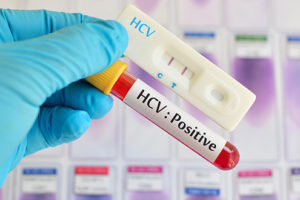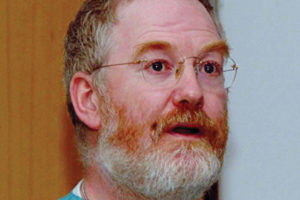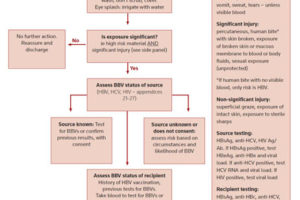The treatment of hepatitis C has made major strides in recent years, with the biggest advance seen in the development of new interferon-free oral agents, writes June Shannon.
Addressing a meeting in Dublin recently on the hepatitis C virus (HCV), Prof. Colm Bergin, Consultant Physician in Infectious Diseases at St James’s Hospital, said that in the 25 years since HCV was first discovered there had been significant changes in the treatment of the condition and as of today 75 additional drugs had been developed for its treatment.
Speaking at a meeting entitled ‘One Disease Many Dimensions’, which took place in the TCD Science Gallery, Prof. Bergin explained how when interferon first became available it provided a sustained virologic response (SVR) or clear rate of less than 10 per cent, whereas today, in the era of the new oral agents, overall SVR rates of possibly 99 per cent were anticipated.
It is estimated that approximately 1,200 new cases of HCV are notified in Ireland every year. In November 2014, the HSE rolled out its early access programme to provide patients with the most clinical need access to the new direct-acting antiviral (DAA) oral agents.
Prof Bergin explained that approximately 150 patients had received the new DAA regimen to date, which included both decompensated and compensated cirrhotic patients. Once all HCV patients with cirrhosis had been treated, Prof Bergin said that the next challenge was where to go next.
Listing the challenges affecting the care of HCV patients, he said these included equity of access to marginalised groups such as injecting drug users, migrants and the prisoner population, while the challenges affecting cure included HCV screening and access to care.
“The need for a disease registry cannot be underestimated and that is not just for clinical phenotyping but also… molecular phenotyping, so we can begin to trace both clinical and epidemiological events over the coming years,” Prof. Bergin told those gathered for the meeting organised by AbbVie Ireland.
In conclusion, Prof. Bergin said: “The drugs work, but there are challenges, and those challenges relate to viral factors, they relate to host factors, but they also relate to health systems and public health funding, and there is also that societal issue around integrating healthcare and social welfare.”
Prof Bergin then introduced Chicago-based Dr Barry Bernstein, Vice President, Infectious Disease Development, AbbVie, who discussed the lessons his company had learned from its HCV drug development programme. According to Dr Bernstein, there had been a “tremendous evolution of therapy in the last few years” both from a therapeutic and drug development perspective.
He described how AbbVie had a long history in virology that dated back to the introduction of the first diagnostic test for HIV in the mid-1980s. He then summarised the history of the company’s involvement in HCV therapy.
Outlining the objectives of the company’s HCV development programme, Dr Bernstein said they were: to identify and develop interferon-free direct acting antiviral (DAA) combinations that result in the greatest certainty of sustained virologic response (SVR); to minimise virologic failure and the opportunity to develop DAA resistance by providing potent agents that target different steps in the HCV life cycle and provide the simplest, shortest therapy that maintains SVR.
He then presented a history of clinical trials carried out by AbbVie from the early in vitro studies to the phase III trials of the 3D regimen such as SAPPHIRE I and II, PEARL II,III and IV and TURQUOISE II and I. The 3-DAA treatment regimen includes the oral agents paritaprevir, ombitasvir and dasabuvir.
Dr Bernstein explained that the SAPPHIRE I and II, PEARL II,III and IV and TURQUOISE II and I trials formed part of AbbVie’s Phase III programme, which involved the comprehensive assessment of 3D plus or minus Ribavirin in a total of 2,608 cirrhotic and non-cirrhotic HCV patients (genotypes 1, 1b and 1a).
According to Dr Bernstein, the results of these trials revealed high SVR rates across populations and low rates of adverse-event-related discontinuation. The findings from these studies also revealed that treatment duration of 12 weeks was appropriate for most patients, he added.
Looking to the future, Dr Bernstein advised that ongoing studies in patients with renal failure, CP-B cirrhosis and post-liver transplantation with advance disease would provide further information on the use of the 3D treatment regimen. He also said that pan-genotypic next-generation compounds with activity against first-generation resistance variance were expected to enter phase III trials later this year.
Cirrhotic HCV patients
The next speaker to address the meeting was Prof. Fred Poordad, Chief Division of Hepatology, Liver Transplant Program at the University of Texas Health Science Center, San Antonio in the US. Prof Poordad concentrated his talk on the treatment of cirrhotic HCV patients.
Echoing previous speakers, Prof. Poordad agreed that the treatment of HCV had come a long way. However, he added that there was still a lot more to be done. According to the hepatologist, the populations with the highest unmet medical needs such as those with cirrhosis, co-infected patients and those on dialysis were the ones that now needed the most attention, because for many of these patients time was simply running out.
He advised attendees that when it came to the cirrhotic patient population, more research was required and one size or duration of therapy would not fit all. He also explained that Ribavirin use appeared to be warranted with all regimens and was “an important player in the cirrhotic population”.
Looking to the future, he suggested that baseline resistant variant testing was likely to play a major role in regimen selection.
Prioritising patients
The final speaker of the evening was Dr Diarmaid Houlihan, Consultant Hepatologist at St Vincent’s University Hospital in Dublin, who addressed how best to clinically prioritise non-cirrhotic patients for treatment.
Outlining the burden of HCV in Ireland, Dr Houlihan said it affected 500 cirrhotic patients, a further 7,500 people with HCV who were engaged with the health service, between 3,000 and 8,000 who had been diagnosed but were not engaged with the services, and up to 14,000 people with HCV who remained undiagnosed.
He said that by the end of the year all known cirrhotic patients with HCV who were engaging in care in Ireland would have been treated. However, he added that the question was ‘where do we go from there?’
Dr Houlihan suggested that by utilising the tools for stratifying the different stages of liver fibrosis in non-cirrhotic HCV patients, those with the most severe fibrosis, i.e. pre-cirrhosis, could be the next cohort for treatment.
He explained that the 7,500 patients engaged with the health service who were attending regular clinics had access to FibroScans and other tools to stage their fibrosis, and as between 3,000 and 8,000 patients were attending addiction services around the country, this cohort could also be accessed.
“A fifth of our transplants every year are related to HCV cirrhosis and the complications. HCV recurs in all those patients and the rate of re-transplantation is double that for non-HCV patients; in addition to that our survivals are inferior in that cohort… Liver transplantation is not the answer for these patients and for that reason I am going to be a little bit biased in how we should prioritise the next wave of therapies,” Dr Houlihan stated.
Outlining the different tools available for stratifying liver fibrosis in patients with HCV, Dr Houlihan explained that these included liver biopsy, which he said was expensive and neither practical nor convenient. Other tools included FibroScans, serum markers, the APRI score, the FibroTest and ultrasound elastrography. According to Dr Houlihan, of all the tools available the three most practical tests to stratify patients were the FibroScan, the FibroTest and the APRI score.
Finally, Dr Houlihan suggested that patients could then receive scores depending on the severity of their fibrosis and risk factors for progression; such as viral load or co-infections and special issues or complications — e.g. haemodialysis and/or previous treatment with interferon.
Speaking to IMT after the meeting, Dr Houlihan said that in 2016 when all HCV patients with cirrhosis would be treated, the next focus should be on patients with advanced fibrosis who were progressing towards cirrhosis and its associated complications such as cancer, liver failure and the need for liver transplantation.
“If we can focus on that group in 2016, hopefully cancers and liver failures will become a thing of the past for patients with hepatitis C. Then we can move back down the chain. Everyone should be treated — there is no doubt about it… But I think when there are limited budgets you need to take that approach to maximise the benefit from the drugs and the benefit to patients,” Dr Houlihan stated.
 Irish Medical Times Medical News for Healthcare Professionals
Irish Medical Times Medical News for Healthcare Professionals




